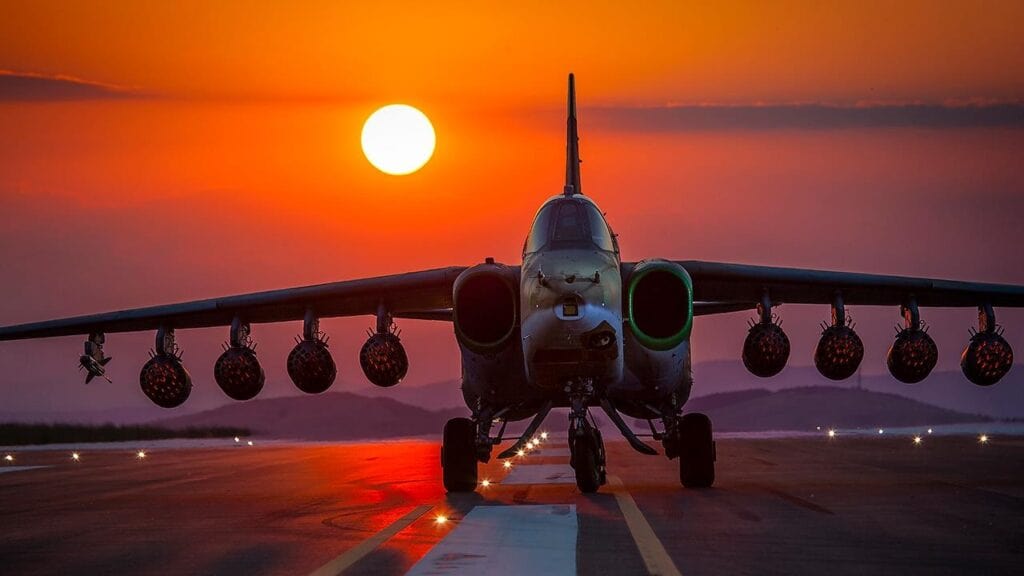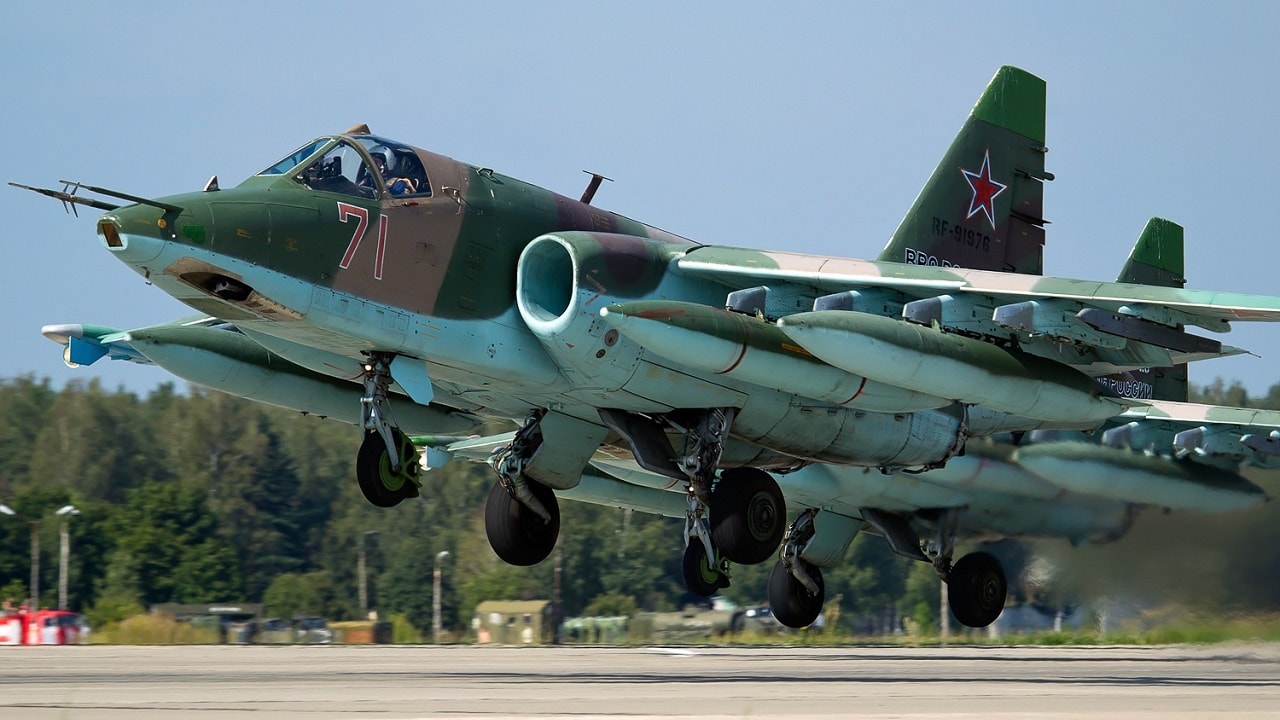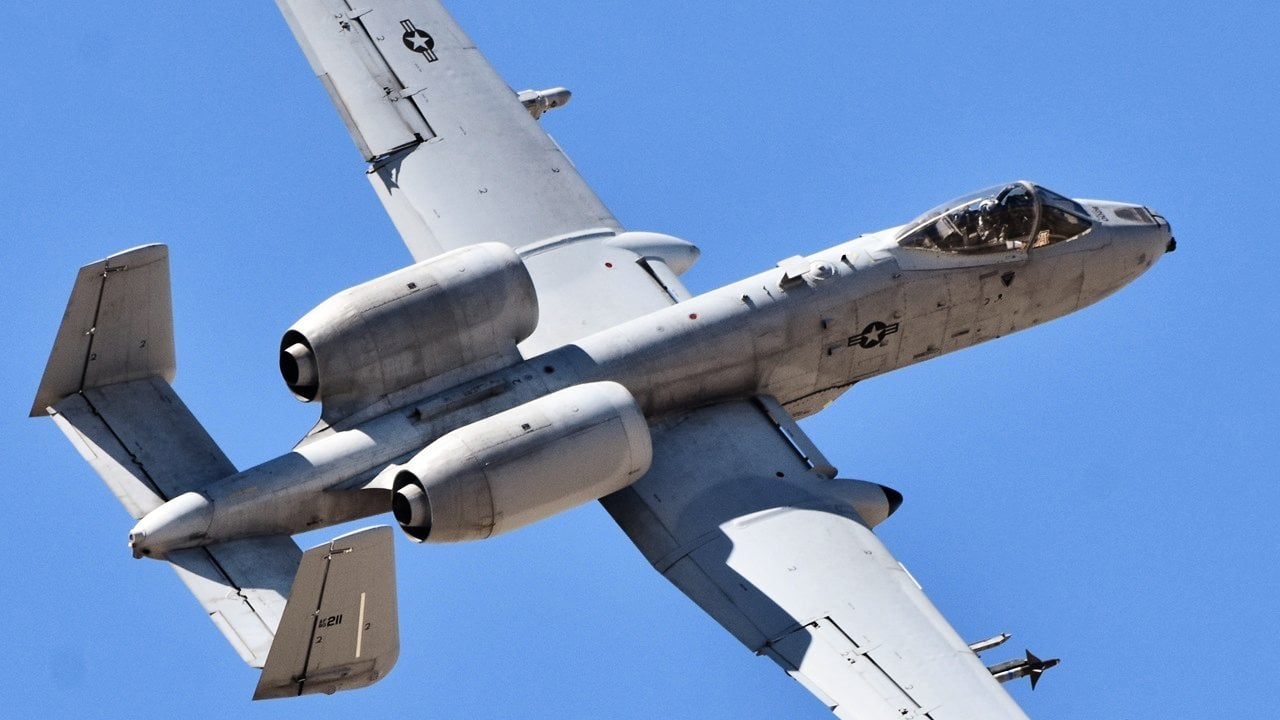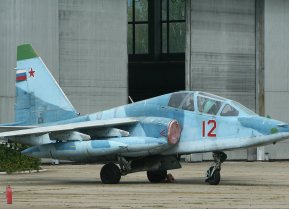Sukhoi Su-25 'Frogfoot': Russia's 'Version' of the A-10 Is a Flying Tank
The Kremlin has shown no desire to retire the Su-25 – even as the U.S. Air Force has been pushing to retire its A-10 fleet (albeit against vigorous and so far successful Congressional opposition).
The Soviet-era Su-25 Keeps Getting Destroyed in Ukraine - Few firearms enthusiasts would suggest that the U.S. military's AR-15/M-16 is a "clone" of the Soviet AK-47, even as the firearms served in a similar role. Yet, some aviation buffs have tried to suggest that the Sukhoi Su-25 (NATO reporting name "Frogfoot") is the Soviet's answer to the United States Air Force's Fairchild Republic A-10 Thunderbolt II.
Though both are indeed single-seat, close-support aircraft (CAS) – like those aforementioned firearms, they were developed independently and evolved from an earlier ground-attack fighter.
Su-25: A Flying Tank
In 1969, the Kremlin launched a procurement competition for a new CAS platform. Manufacturer Sukhoi won the tender with its T-8 concept demonstrator, which was developed throughout several iterations into the Su-25 "Grach."
The twin-engine, single-seat CAS plane made its maiden flight in 1979, and it entered service with the Soviet military in 1981, just in time for the Soviet-Afghan War.
The Su-25 was built from a heavily armored, composite metal airframe, designed to withstand serious punishment from ground-based weapons. Not unlike the U.S. A-10 Thunderbolt II, the Su-25's cockpit features a titanium "bathtub-style" enclosure to provide the pilot with additional protection.
Well Armed Aircraft
Its main armament consisted of a one twin barrel 30mm gun in the bottom of its fuselage, and it typically carried around 250 rounds. The Grach is equipped with eight pylons under the wings that can carry 4,000 kg of air-to-ground – including a selection of rockets, missiles, and bombs. This enables the aircraft to accommodate a wide variety of low-flying strike and ground support missions.
Ordnance can vary from guided and unguided heavy bombs from the KAB and FAB families, Kh-series air-to-surface missiles, and S-13/24/25 rockets, as well as a 30mm GSh-30-2 autocannon. Later Frogfoot models were given the R-73 short-range air-to-air missile, while the GSh-30-2 was upgraded with different firing modes.

A two-seater variant, the Su-35UB (NATO reporting name "Frogfoot-B") was developed as a weapons training aircraft; while a Su-25UTG is a two-seater aircraft carrier variant fitted with an arrester hook under the tail for deployment on Russian Navy's flagship aircraft carrier Admiral Kuznetsov.
The Su-25 Frogfoot Goes to War
The CAS aircraft saw its baptism of fire during the Afghan War era, flying over 50,000 strike sorties against Mujahideen targets— losses were initially low but reached around two dozen as militants received more U.S.-sourced "Stinger" portable surface-to-air missile (SAM) systems.
Su-25s spearheaded Iraqi air operations during the Iran-Iraq War of the 1980s, reportedly suffering only one loss. That fact has as much to do with Iranian air defenses as it does of the capabilities of the aircraft.

Following the end of the Cold War, the Grach was widely used throughout the first and second Chechen Wars; with the Chechen side lacking dedicated air defense systems, Russian Su-25s were able to loiter and provide extended air support in some of the heaviest fighting of those conflicts. Most recently, Su-25s were used on several occasions by both the Armenian and Azerbaijani Air Force during the Second Nagorno-Karabakh.
Russia Keeps Flying the Grach
The Kremlin has shown no desire to retire the Su-25 – even as the U.S. Air Force has been pushing to retire its A-10 fleet (albeit against vigorous and so far successful Congressional opposition).
The Grach is slated to keep flying for decades to come.
The Russian military has continuously invested in upgraded Su-25 variants in the decades following the Soviet collapse. The Su-25SM revision brought some minor avionics updates, engine improvements, and additional weapons choices. From 2018 onwards, the Russian military began receiving Su-25SM3s with modernized targeting, electronic warfare, and navigation suites.
Widely Exported
In addition to service with the Russian Air Force and the Russian Naval Aviation Forces, the Grach has been widely exported as the Su-25K.
That variant has seen service with the militaries of Afghanistan, Angola, Azerbaijan, Belarus, Bulgaria, the Czech Republic, Georgia, Iran, Iraq, Kazakhstan, Macedonia, North Korea, Peru, the Slovak Republic, Turkmenistan and Ukraine.
Destroyed in Ukraine
At the start of the war in Ukraine roughly 180 Su-25s, including both the baseline version and its upgraded variants, were active in the Russian Air Force.
According to the open-source military intelligence website Oryx, a total of 17 of the CAS aircraft have been destroyed since Russia launched its unprovoked invasion in February 2022. Three of the aircraft were shot down in a single week in October 2023.
A fourth Su-25 was also destroyed at the end of the same month – reportedly shot down by a shoulder-mounted man-portable rocket, employed by units of the Ukrainian State Border Guard Service near the city of Donetsk in the eastern Donbas region.

"Our MANPAD operators spotted the target. According to tentative reports, it was a Russian Su-25 attack aircraft. The MANPADS rocket hit the target, after which the plane was seen descending with a smoke trail before it vanished beyond the horizon line," Andriy Demchenko, spokesperson for the agency, told reporters a day after the incident occurred.
Perhaps the Air Force is right in seeking to retire the A-10.

Author Experience and Expertise
A Senior Editor for 19FortyFive, Peter Suciu is a Michigan-based writer. He has contributed to more than four dozen magazines, newspapers, and websites with over 3,200 published pieces over a twenty-year career in journalism. He regularly writes about military hardware, firearms history, cybersecurity, politics, and international affairs. Peter is also a Contributing Writer for Forbes and Clearance Jobs. You can follow him on Twitter: @PeterSuciu.
Image Credit: All Images are Creative Commons.


